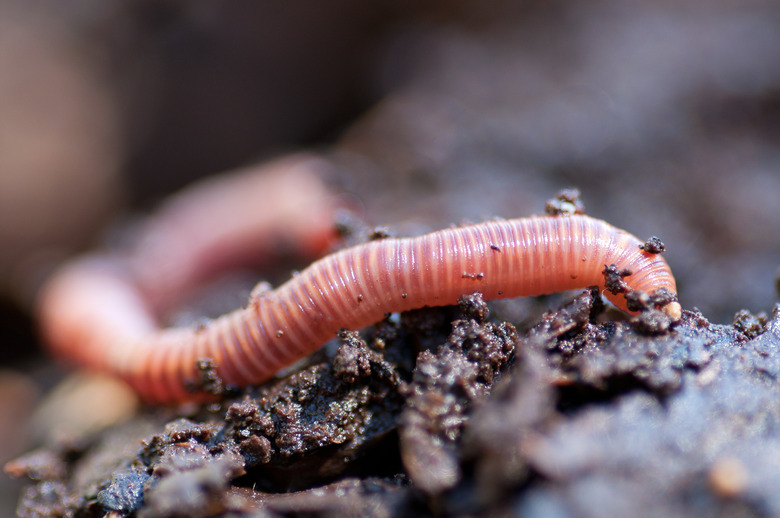How Many Hearts Does An Earthworm Have?
Earthworms play an important role in many ecosystems, breaking down rotting organic matter into its simple components for use by plants. While earthworms may seem simple because they lack many visible external organs, they have complex inner organs including five pairs of heart-like structures called aortic arches, which they use to pump oxygenated blood to the rest of their bodies. In fact, depending on the definition of "heart," earthworms can be said to have either 10, or zero hearts.
TL;DR (Too Long; Didn't Read)
Earthworms can have five, 10 or zero hearts, depending on how you define "heart." They have five pairs of aortic arches that run along the length of its body (or 10 single arches, if you count each pair as two separate structures). That said, a human heart, for instance, has multiple chambers, while aortic arches have only one; if you define a heart as having multiple chambers, then an earthworm would have zero hearts.
Earthworms Across the World
Earthworms Across the World
Earthworms sit in a taxonomic group called annelids, or segmented invertebrates. Other members include leeches, and other terrestrial and aquatic worms, some of which can grow to be 11 feet long. The world has more than 1,800 species of terrestrial worms that scientists largely consider earthworms, and they have spread far across the Earth. The United States of America, for instance, has 17 native species and 13 species introduced from Europe. Earthworms can appear in almost any climate that has soil with enough decaying matter and moisture to sustain them.
The Heart of the Matter
The Heart of the Matter
Earthworm bodies have an outer layer of muscle, epidermis (skin) and cuticle (protective hard layer). They have between 100 and 150 segments and a tube-like shape, which allows the species to easily move through soil. Its innards, as such, also arrange themselves within this cavity. An earthworm's "hearts" sit near the creature's mouth in five pairs, and function much like a human heart, though earthworms breathe oxygen through their skin and require moisture for respiration. These heart-like organs bear a resemblance to arches, hence the name aortic arch. Some species of annelids regulate heartbeat using their muscles, while earthworms use nerve cells, much like vertebrates. In this way, an earthworm's hearts may seem more similar to a proper, human heart than other members of the annelid grouping. Similarly, annelids have closed circulatory systems, meaning their blood stays within vessels rather than free-flowing in the body, as is the case with some other invertebrates like mollusks.
After an earthworm "breathes" through its skin, its aortic arches pump the oxygenated blood through its body for use using its dorsal and ventral blood vessels. The dorsal blood vessels carry the blood to the front of the worm, while the ventral blood vessels send it to the worm's backside.
Tiny but Mighty
Tiny but Mighty
Earthworms help improve soil quality by breaking down large pieces of organic matter into humus. Other creatures like birds use them for food, and humans occasionally use them as bait while fishing. Some humans also keep worms in specialized containers into which they toss organic waste. The humans later use the leftover nutrient rich soil, or compost, for gardening projects.
Cite This Article
MLA
Johnson, Doug. "How Many Hearts Does An Earthworm Have?" sciencing.com, https://www.sciencing.com/many-hearts-earthworm-have-4597386/. 23 April 2018.
APA
Johnson, Doug. (2018, April 23). How Many Hearts Does An Earthworm Have?. sciencing.com. Retrieved from https://www.sciencing.com/many-hearts-earthworm-have-4597386/
Chicago
Johnson, Doug. How Many Hearts Does An Earthworm Have? last modified August 30, 2022. https://www.sciencing.com/many-hearts-earthworm-have-4597386/
